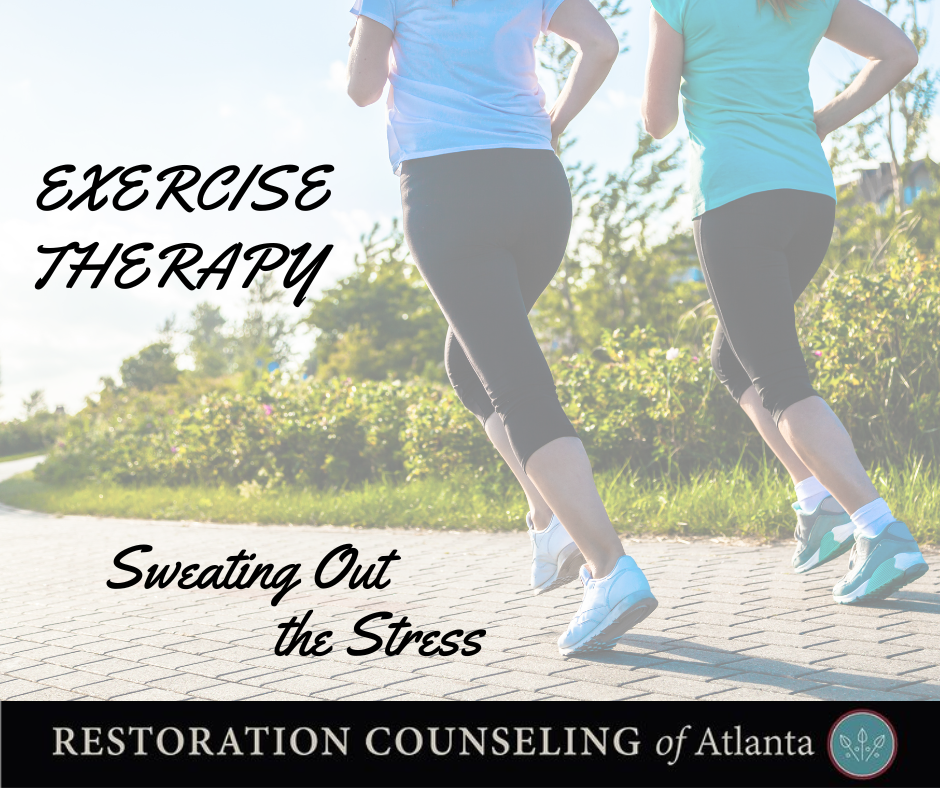Are you familiar with exercise counseling and its benefits? In graduate school, I first heard about therapists taking their clients for a run. This immediately ignited a passion within me! As a therapist who loves exercise and movement, I recognized the potential benefits. By combining both passions (therapy and exercise), there could be more significant healing for my clients. Therefore, I set out on a journey to discover how I could incorporate exercise as a part of therapy with interested clients.
Is exercise a proven therapy?
After researching the topic, I presented at a conference stating that we needed a modality for exercise psychotherapy. Several running therapists, including Thaddeus Kostrabula, the founder of running therapy in the United States, helped me grow in my understanding of the benefits. I began to envision how I might use this with my clients. In the 1970s, Kostrabula was the first psychiatrist to run with clients. While in Germany with my husband in 2017, I met with a running therapist who is very specialized and has written several books on the subject.
What is exercise psychotherapy?
It uses physical activity such as walking, running, or other aerobic movements combined with therapy. Taking therapy outside is a powerful tool because it allows clients to regulate their moods more easily through exercise. Walking and running will enable the brain to create new neurotransmitters, which will help a person better handle frustrating situations.
How does it work?
Dr. Ozzie Gontag has been exercising with clients since 1973 and says that “a client can rewrite their story on a running trail through distance and dialogue.” He also noted that clients are usually more in touch with their feelings when walking. It’s also helpful for clients who don’t like making eye contact. A change of scenery can also help the client look at life through a different lens. Each step taken is a movement in a new direction. It’s a reminder that life is continually changing, and the brain continues to grow and change. Taking therapy outside allows a client to change their perspective and narrative.
What are the benefits?
Personally, I have benefited from walking and working through feelings. The physical challenge of running creates more possibilities to have a growth mindset and be more open to therapy challenges and changing their narrative. Dr. Gontag said that running therapy will allow clients to “burn off the adrenaline that keeps them locked up while sitting in a therapy session.”
Is exercise therapy better than other types?
Running in combination with therapy is an incredibly effective tool to help combat depression and anxiety. Keith Johnsgard, the author of Conquering Depression and Anxiety Through Exercise, said he has noticed that his clients are less likely to be inhibited when they are outdoors. He mentions a client struggling with extreme guilt over his wife committing suicide. Johnsgard prescribed this man the therapeutic tool of paradox, where he encouraged him to run for an hour and only think about how guilty he felt. The goal was that he longer feel guilty about the suicide. Johnsgard said this worked because his guilt changed to anger as he realized it was impossible to simply focus on feeling guilty.
Is there a connection with EMDR?
Eye movement desensitization and reprocessing (EMDR) is a therapy that uses bilateral stimulation to allow the brain to reprocess a traumatic event or situation. According to the article Left, right, left, right, left—taking EMDR off the couch , EMDR is similar to the left-right-left movement a person’s eyes make during REM sleep. This article is a reminder that running therapy can be a “natural form of EMDR due to the left-right-left motion of the feet.”
EMDR stimulates both sides of the brain to move through an event where the brain is getting stuck. Walking and running also use both sides of the brain for bilateral movement because it is a rhythmic movement of both sides of the body. When someone goes on a hike or a run, they feel like they are thinking about an event differently. Francine Shapiro founded EMDR in the late ’80s. While on a walk, she realized that she felt better afterward and wanted to understand why she felt better.
Moving one’s body forward “suppresses the brain’s fear response and encourages us to be more courageous and confrontational” (Why Daily Walks May Help Reduce Our Fear Response). The author explained that “this effect is due to the ‘lateralized eye movements’ that our eyes engage in (i.e., naturally moving from side to side as we take in the environment around us) while we’re actively propelling our bodies forward.”
What does exercise therapy look like?
While I currently incorporate walking with clients, my goal is to get trained to run with my clients. Dynamic Running Therapy (DRT) is a type of therapy that incorporates running along with the therapy technique of mindfulness. The book Running with Mindfulness by William Pullen says that DRT includes the idea that “by acknowledging our feelings and thoughts, we can make peace with them.” We begin to see a way to separate from our thoughts and recognize that thoughts can come and go. It frees us from over-identifying with our thoughts (pp. 12-13).
There are three ways to be aware of what one is feeling: through thoughts, feelings, and the body. Many clients are unaware of where they feel the tension in their bodies. Running therapy can allow clients to become more tuned in to their bodies, so they are able to move through the anxiety and stress.
My goal in incorporating running therapy into my practice is to help clients work out feelings of frustration, anger, and resentment and allow those feelings to move through their bodies faster. I believe it can enable clients to have a more profound, integrative healing.
An Overview of an Exercise Therapy Session
An exercise therapy session would take place outside at a park. The client and therapist move together at a pace where they can both easily converse. For some clients, the stride will be walking and for others it will be running. The client sets the pace and can change from running to walking at any point. The goal is to allow the client to work through challenging thought patterns by moving the body and creating new neurotransmitters in the brain. This will create new ways of relating to a situation. Exercise therapy is for anyone who desires to do it! It can be for someone who has never run but has continually thought about it. The therapist has a program that will allow a client to start by running for one minute and walking for two minutes to build up endurance.
Please reach out to me if you are interested!

by Mead Reed, MA, LMFT, LPC
mead@restorationcounselingatl.com, ext. 115
Roswell and Buckhead Locations
Mead counsels adults, couples, and families struggling with anxiety, depression, communication difficulties, grief, parenting, and other life issues. She is a PREPARE/ENRICH facilitator and also works with premarital couples. Mead is passionate about teaching clients to explore their life story to understand how it has shaped who they are today. She provides a safe environment for clients to name their feelings in a healthy way, allowing for redemption and freedom.

